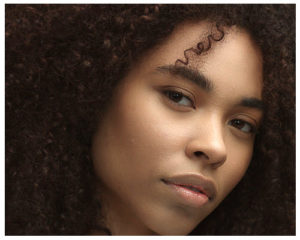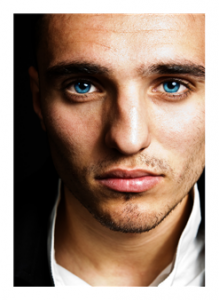Trusting what we see is not a given.
 Case in point: Have you ever noticed the number of expressions in English that invoke our vision, and specifically, the eyes?
Case in point: Have you ever noticed the number of expressions in English that invoke our vision, and specifically, the eyes?
Are you familiar with the expression, “believe none of what you hear, and half of what you see?”
Don’t we judge a great deal about a person based on how he or she looks at us, and whether or not they hold our gaze?
Aren’t mutual reliance in business and matters of sexual attraction either enhanced or degraded by a look in the eye?
In “Psst, Look Over Here,” Kate Murphy explores the nature of eye contact and its importance to our health and relationships.
Referring to “its essential role in developing emotional stability and social fluency,” she reports that newborns seek eye contact, advertisers provide faces to humanize our cereal boxes, and even smiley emoticons may serve as an unconscious attempt to connect in this fundamental way.
There Are None So Blind As…
I find myself thinking of this expression: “There are none so blind as those who will not see,” especially fascinating as I read this from Ms. Murphy’s Times article:
… Only actual eye contact fully activates those parts of the brain that allow us to more acutely and accurately process another person’s feelings and intentions…
Even the brains of legally blind people have been shown to light up when someone looks them in the eye. It’s a sort of primal awareness… This has obvious evolutionary benefits for detecting and discerning potential mates and predators.
And yet so many of us with vision refuse to fully process what we see, or think we see, even when we look someone squarely in the eye. We see what we want to see, frequently until an event occurs that spotlights our previous blinders.
Trusting Half of What You See?
Incidentally, the expression “believe none of what you hear and half of what you see” has been attributed to Benjamin Franklin and to Edgar Allen Poe (in 1845), though there are apparently references going back much further. The point is clear: a healthy skepticism can be wise, as we’re subject to being fooled by our own (unreliable?) senses.
 Nonetheless, aren’t we more likely to trust when we can look someone in the eye? Aren’t we more able to discern when we’re being deceived?
Nonetheless, aren’t we more likely to trust when we can look someone in the eye? Aren’t we more able to discern when we’re being deceived?
How many of us have been on the receiving end of a Dear John by text or email? I certainly have – realizing that the other party didn’t have the guts (or truthful story) to look me in the eye while ending the relationship.
Would we prefer to hear the person’s voice, and better still, to see him or her face-to-face? Would we have had clearer answers to the questions that linger if that had been the case?
On the professional front, I realize how helpful it can be to use Skype or Face Time with a remote client, even if only initially. While the virtual experience isn’t quite the same as sharing a room, a degree of eye contact can be made along with observation of body language. Together, these assist in connection, caution, or appropriate amounts of each.
Advertising Vision
As I consider the way images are utilized in ads and online spaces – personally, I gravitate to images in which eyes look into the camera – the Times article clarifies why this holds such appeal.
Ms. Murphy quotes author and branding expert, David Aaker, who says:
“There’s the notion that your relationship with a brand should be like a relationship you have with a person.”
 As I consider those words, I recognize how smartly some products, services, and media make use of this mechanism to forge a “friendly” relationship and thus to build their brands, which certainly works to their advantage.
As I consider those words, I recognize how smartly some products, services, and media make use of this mechanism to forge a “friendly” relationship and thus to build their brands, which certainly works to their advantage.
As consumers, as with any positive spin, this can potentially lead us astray. After all, a friendly face is a useful tool: a good poker player, a skilled negotiator, or a talented actor can reveal or hide whatever facilitates achieving the objective.
My own skepticism (cynicism?) aside, naturally, many of us truly do disclose our most authentic identities with a glance into the lens or a “real time” look in the eye. We may even concede that “the eyes are the windows to the soul” is valid, at least for some.
Eye Spy…
My children always knew when it was time to stop pushing boundaries, pressing for more, or simply ceasing to argue. It was a matter of what was referred to as “the look.”
Don’t most of us possess a stony stare that shuts down the conversation? Don’t we also master the mask, the veil, the inscrutable expression that can’t be read?
Considering some of the descriptions we use – cow-eyed, steely-eyed, shifty-eyed to name a few – language mirrors this critical facility for ascribing intention and emotion even to the briefest encounter. And so the eyes “have it” for many reasons: eye contact both shows our hand and possibly strengthens it; eye contact connects us and emboldens us; eye contact guides us to belief or to a self-protective stance.
Enjoying the conversation? Please share!
You May Also Enjoy
Leave a Reply